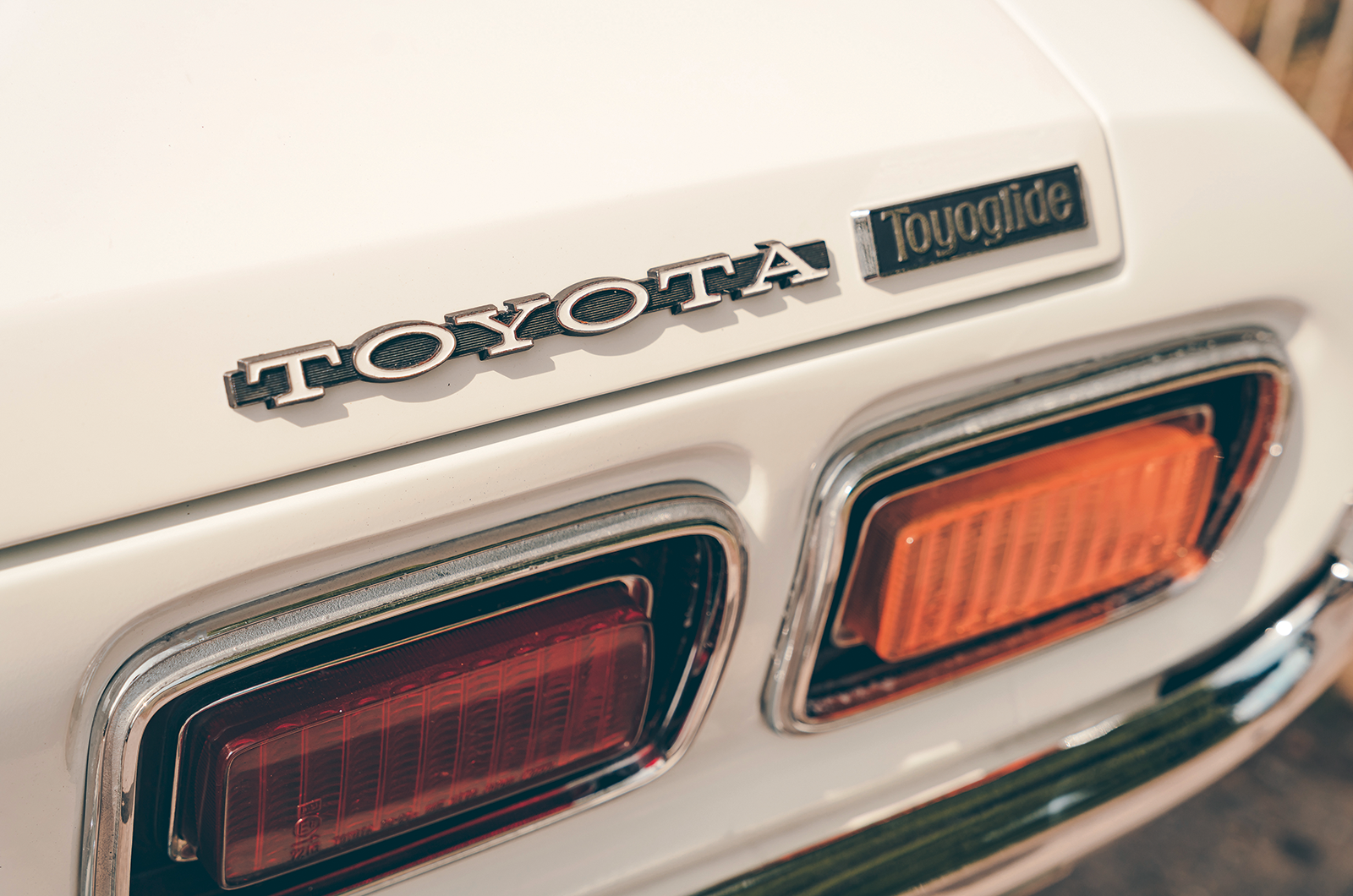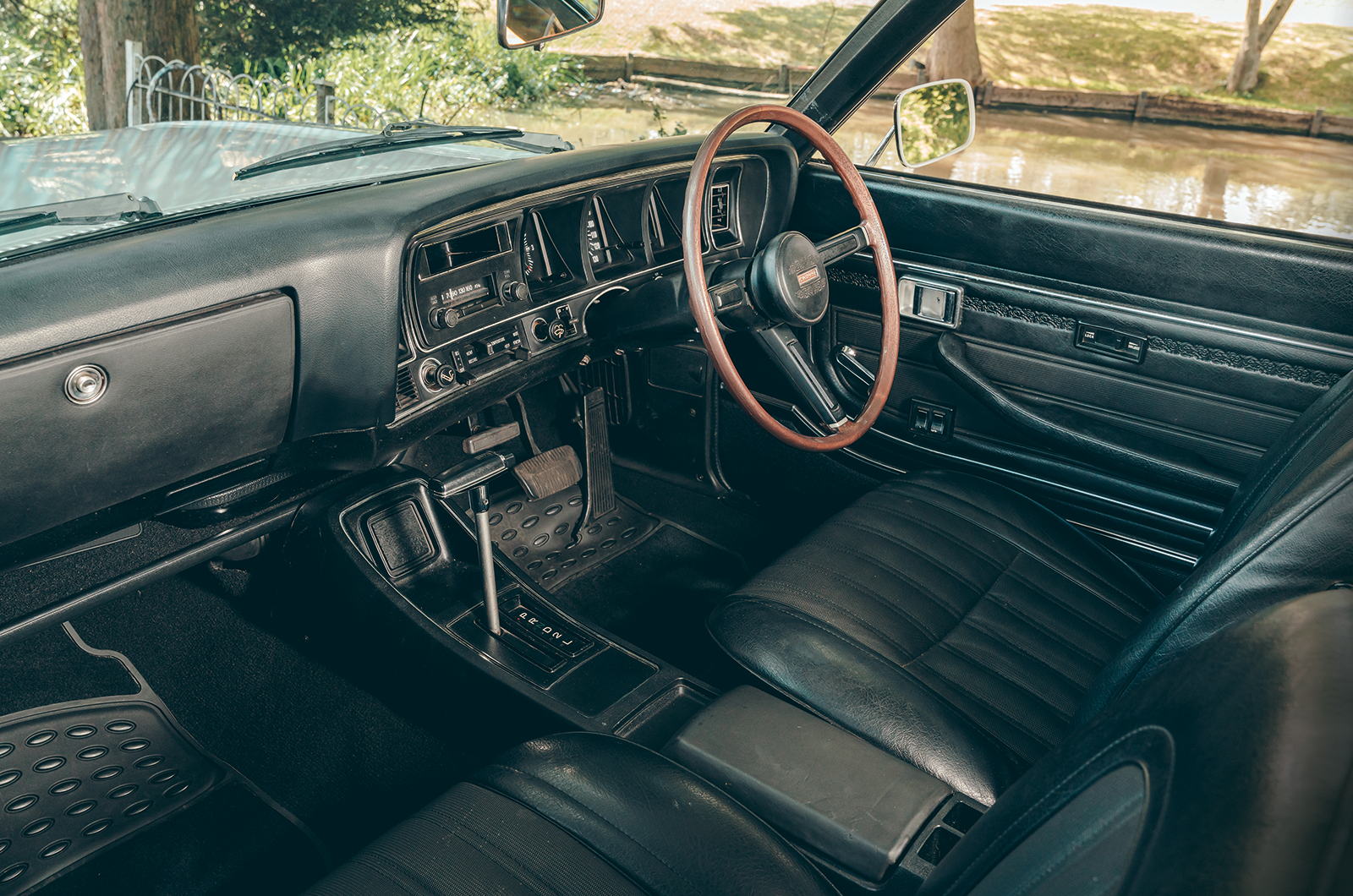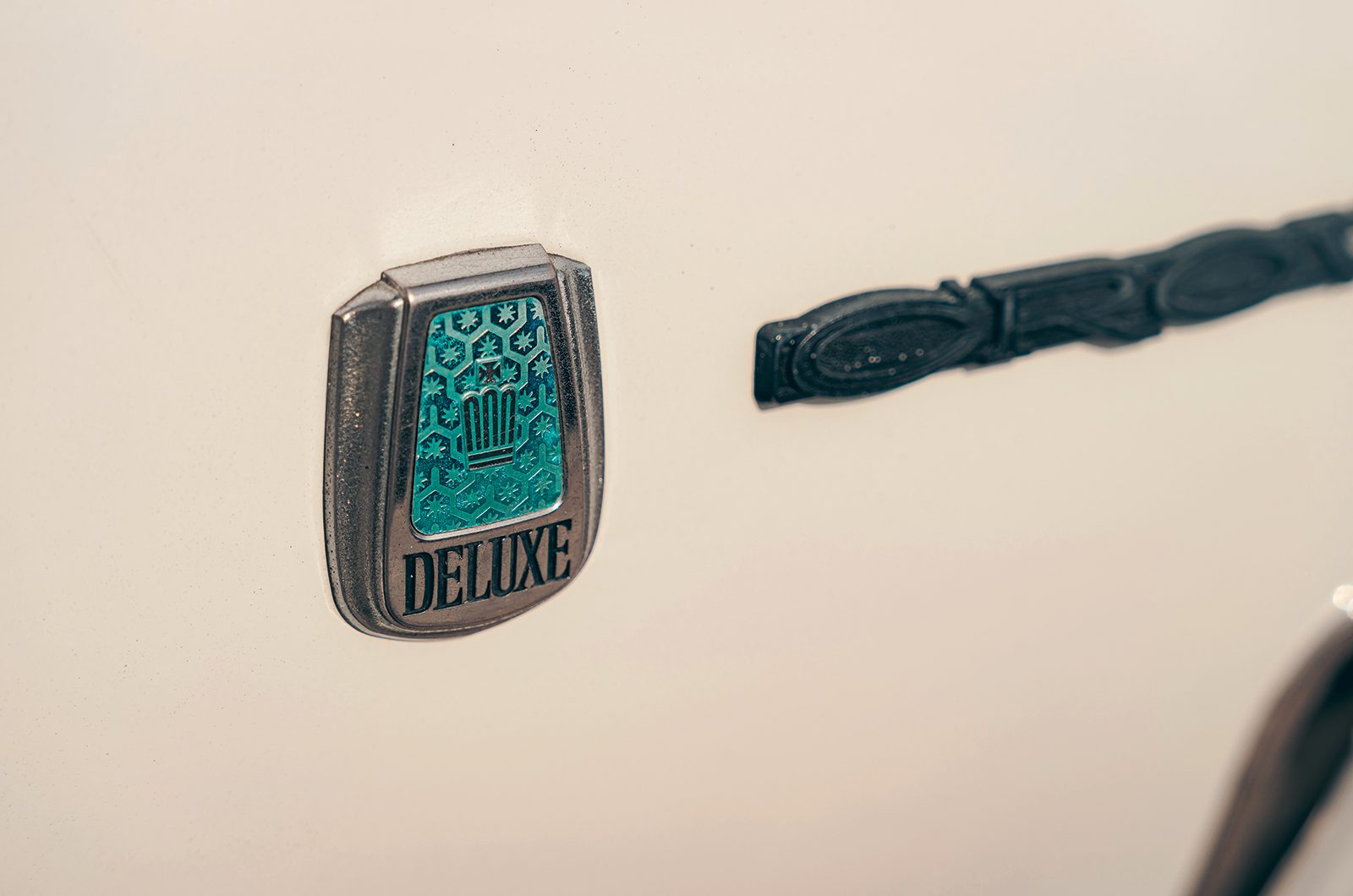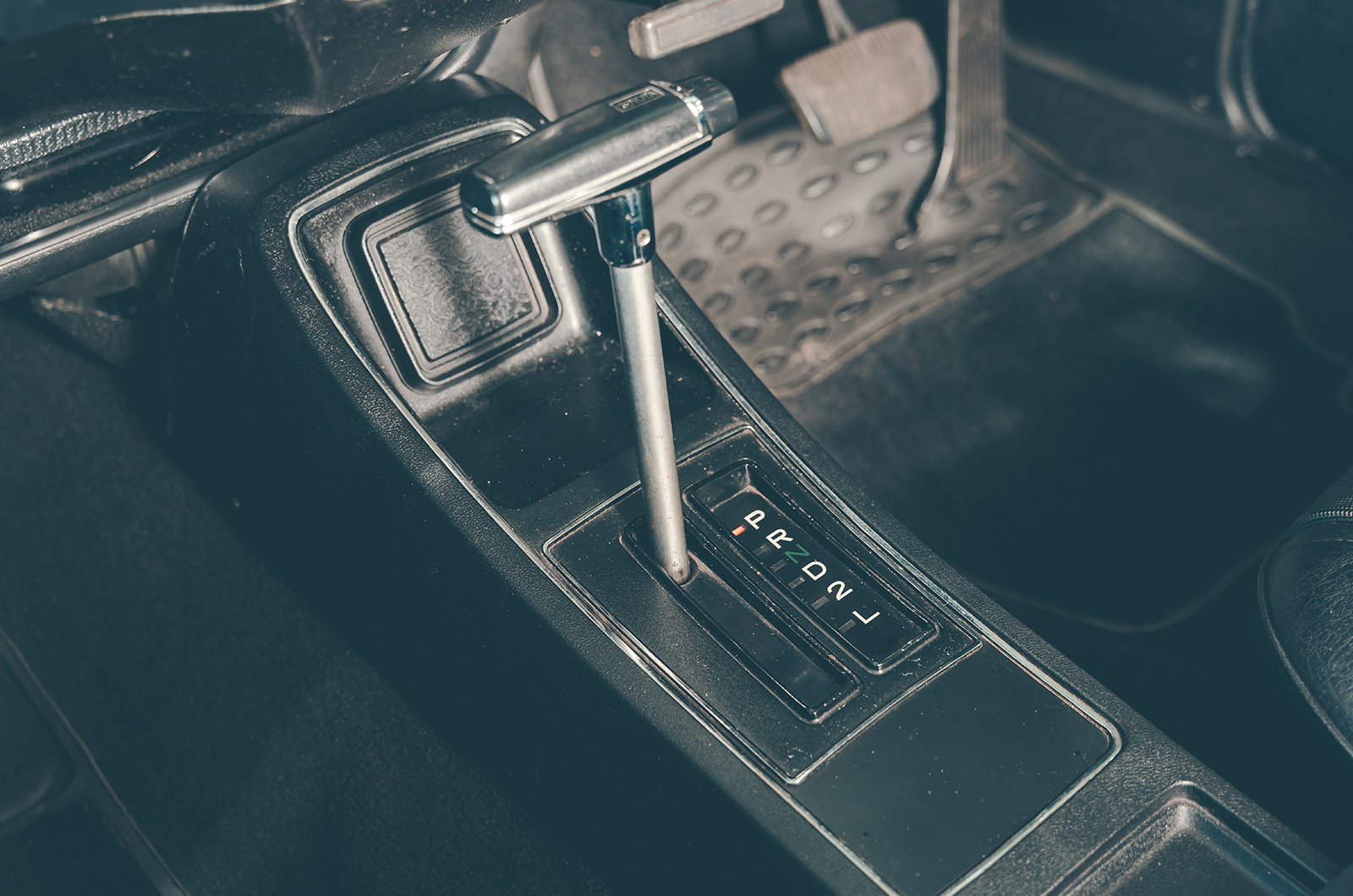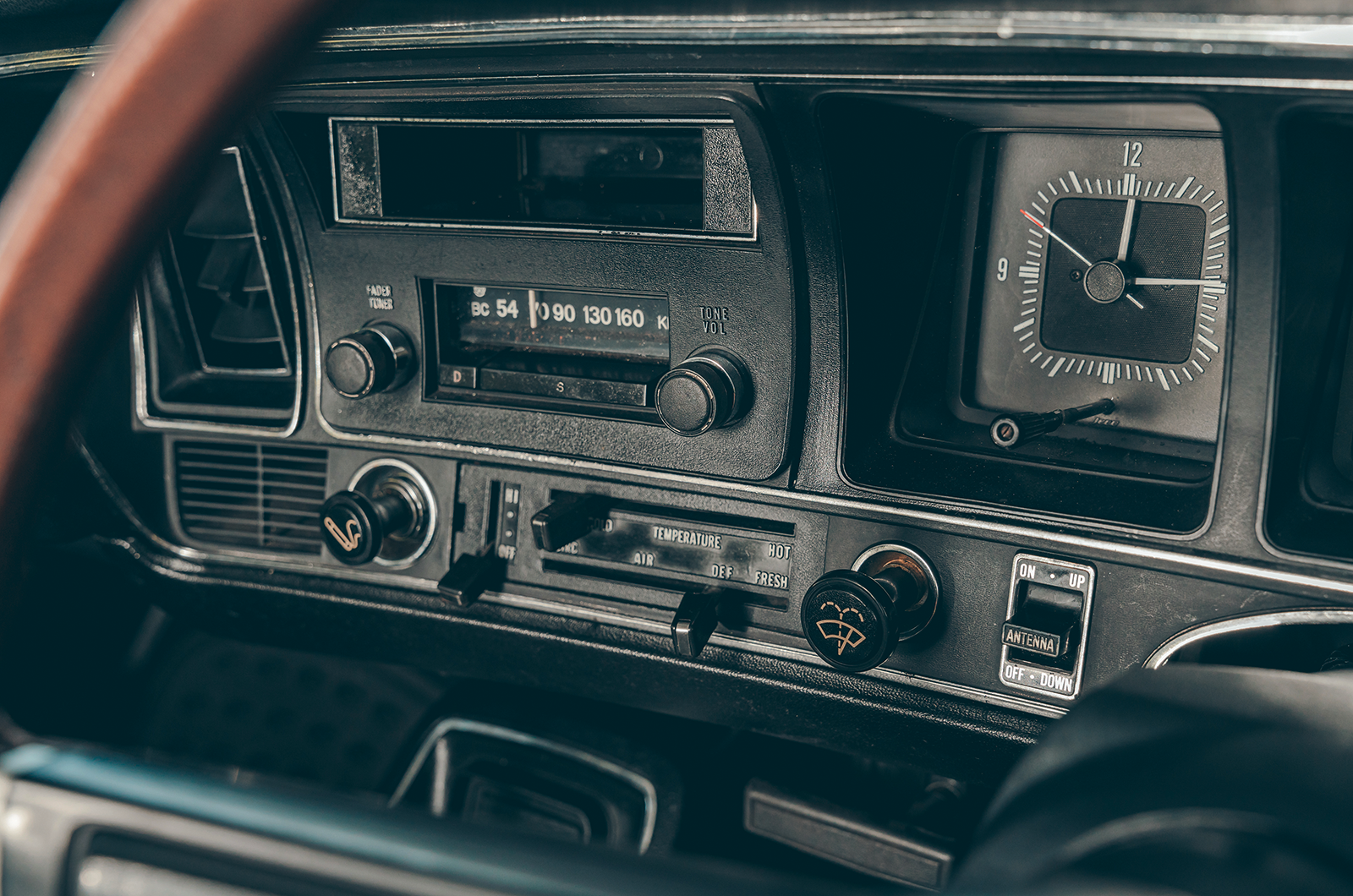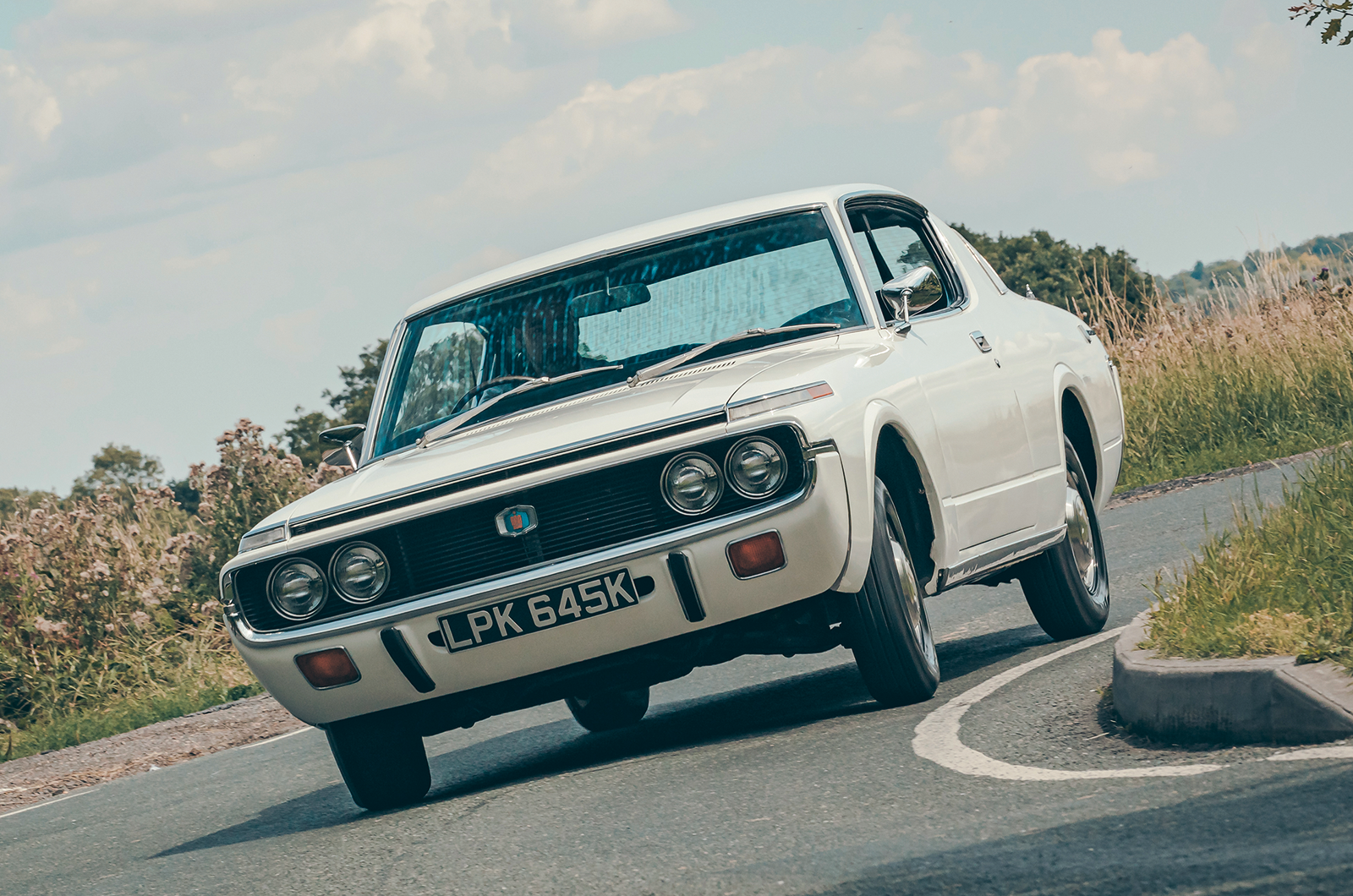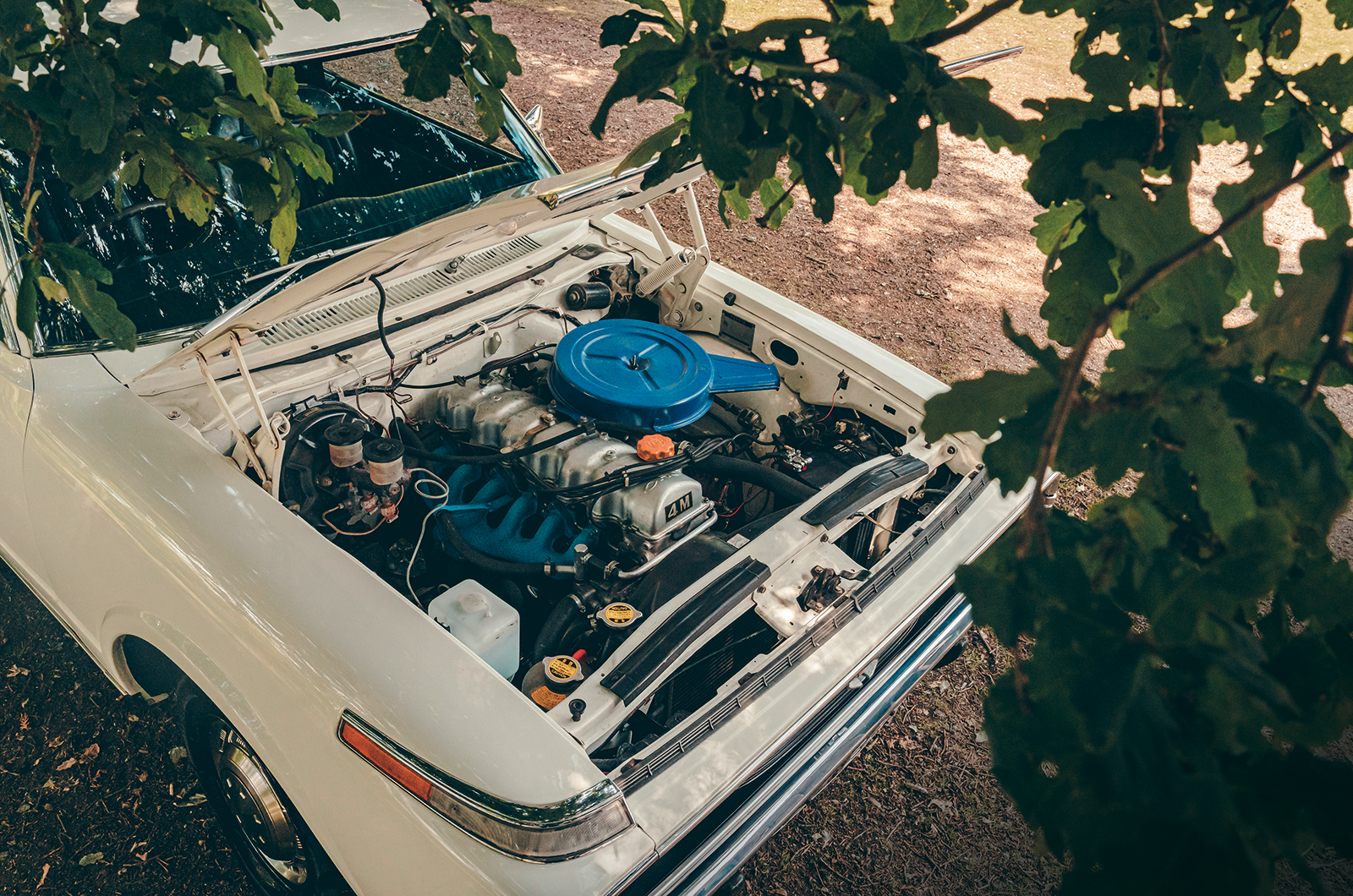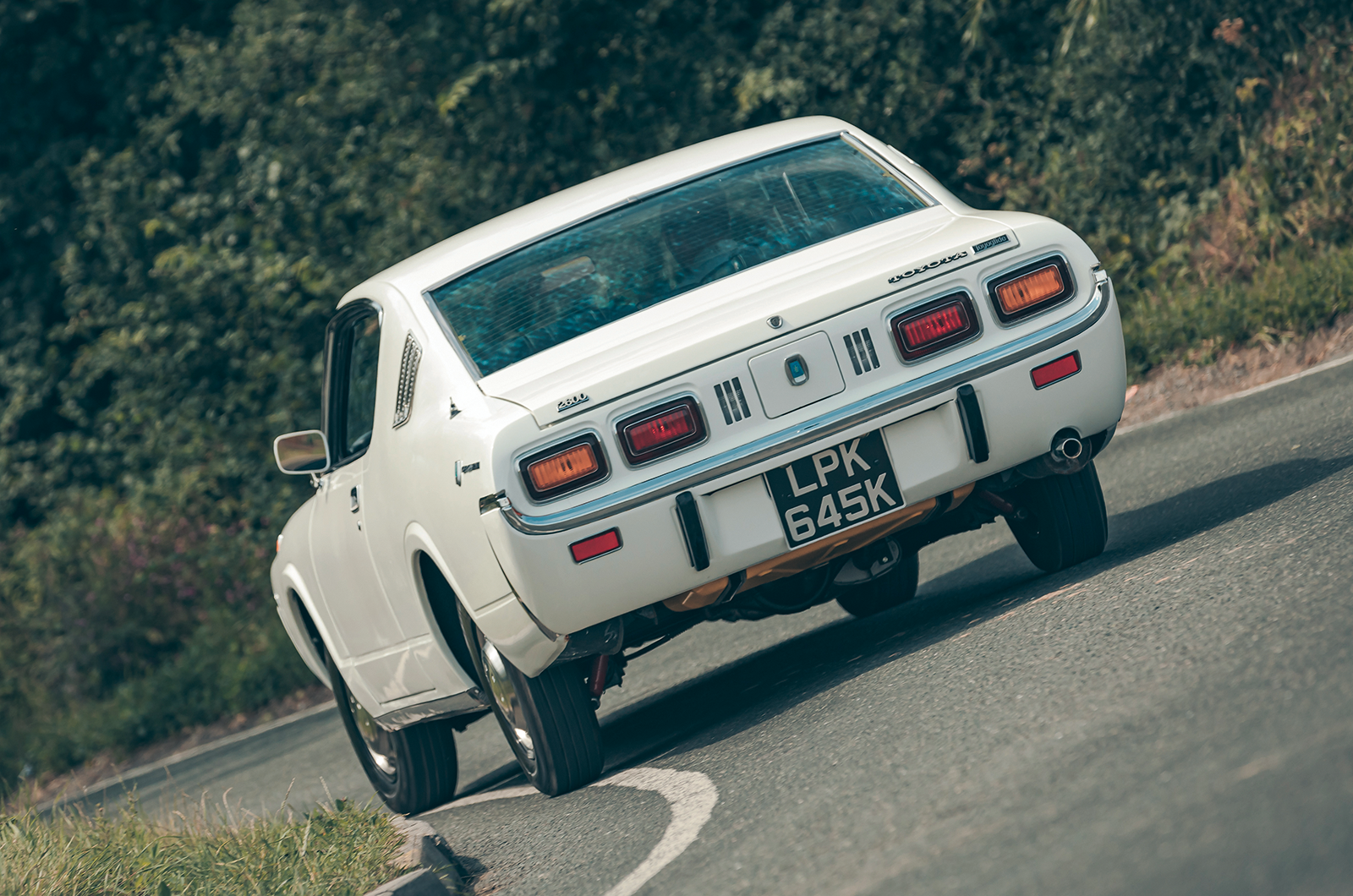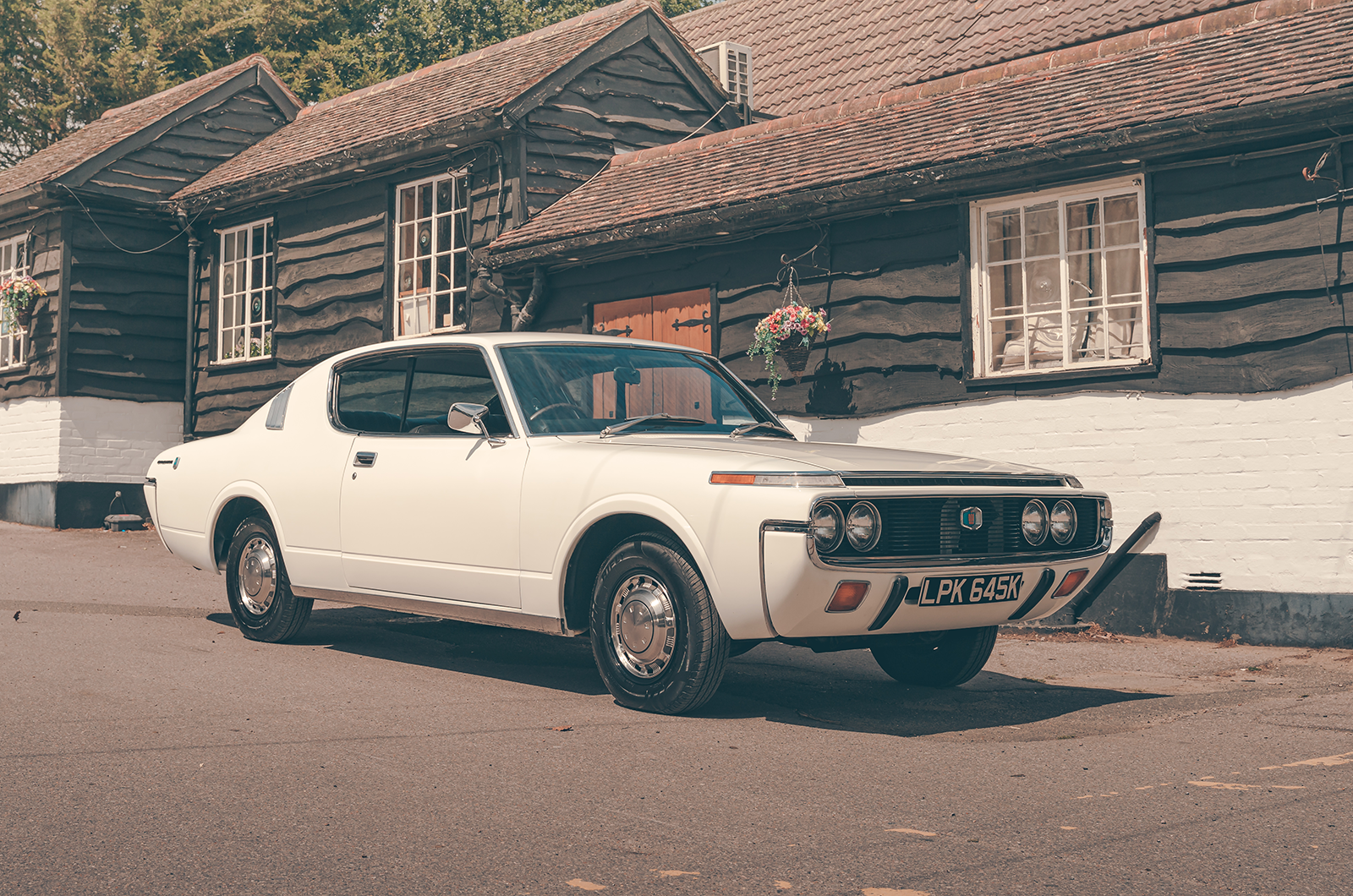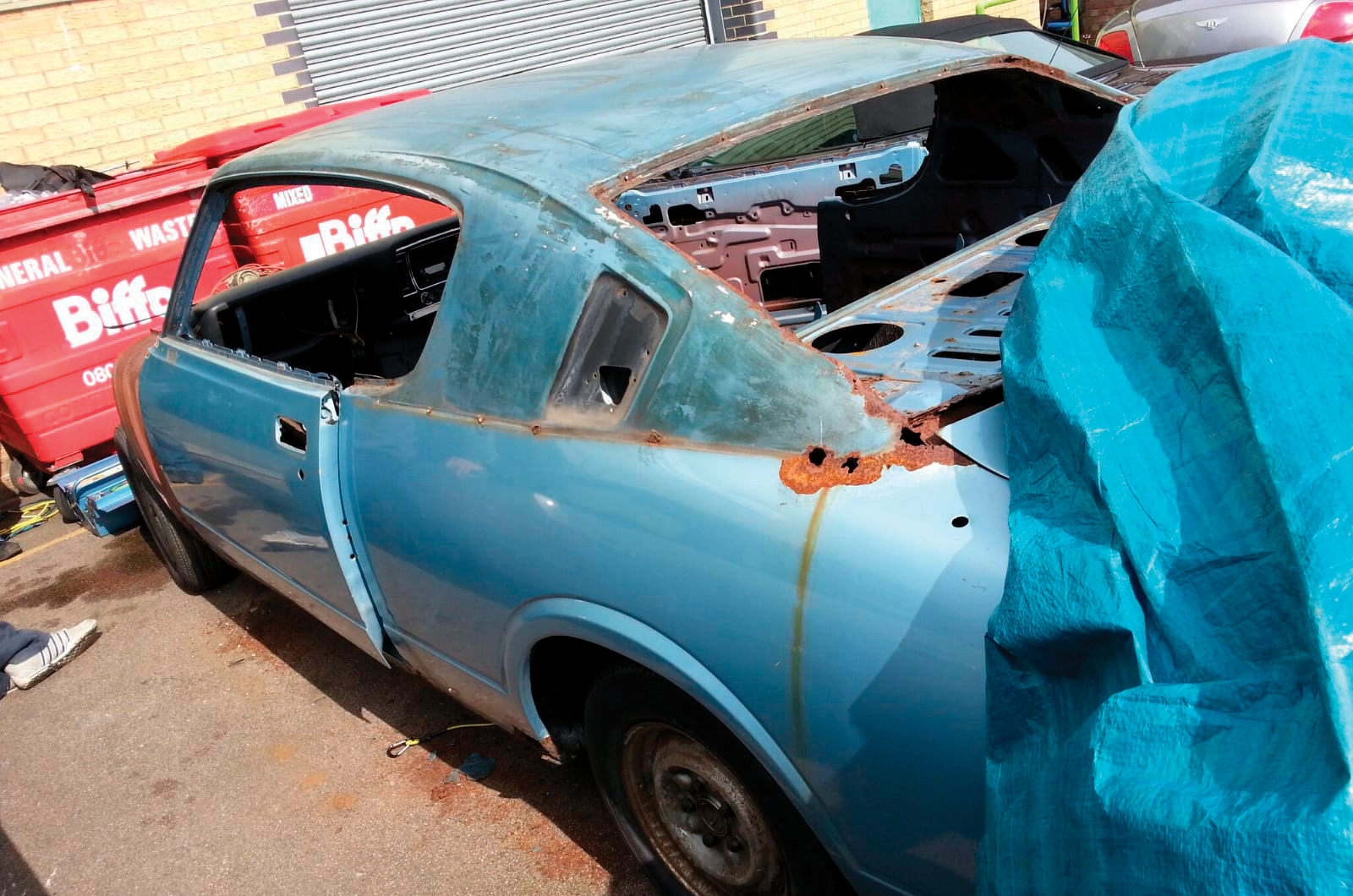This criticism was heeded on the facelifted 1973 Crown range, which, as well as having power steering as standard, gained a slightly more powerful 150bhp engine, now fully balanced and with a higher compression ratio.
The £2700 Crown Special saloon (marketed as the Royal saloon in Japan) had an 8-Track player, head restraints and air conditioning as standard, plus a coolbox in the boot.
Two years on and the big Toyotas faced stern opposition in the form of the new Ford Granada, which was much less ponderous to drive and, in 3000 GXL form, only cost just over £100 more than the Crown 2600 Deluxe.
The Toyota’s thickset C-pillar does impede rearward vision
The Toyota’s acceleration was respectable, with 0-60mph in 12.7 secs, but the low overall gearing still limited the top speed and, more importantly, the comfortable cruising pace.
You wonder if the typical Crown buyer even noticed, however.
They wanted gadgets and value for money and were attracted by the promise of reliability and the US/mid-Pacific looks, particularly in the pillarless coupé.
It’s hard to find production figures for these cars, but going off yearly totals nearly 400,000 fourth-generation Crowns were built.
The domestic-market-friendly low gearing tempers the Crown’s cruising prowess
It’s safe to assume the coupés are the rarest: they were hardly ever encountered on the road in the 1970s.
One famous owner of a Crown coupé (to be fair, likely the only one) was northern radio comic Al Reid, who had his most famous catchphrase, ‘Right, monkey!’, painted on the metallic-green front wings.
I was surprised to learn that there were as many as 70 registered in Britain in 1997; the latest available figures (fourth quarter of 2022) show just one Crown coupé taxed and on the road, with another four holding SORN status.
There can’t be many as nice as this restored car, owned by Clive Lewis, which is very much on the road and in regular use.
The neatly embossed vinyl is a theme throughout the Crown’s gadget-laden interior
It was born light blue, but its respray in white suits the shape, which is part early Mustang fastback and part AMC Ambassador coupe.
On 175-section rubber and 14in wheels it looks handsome but under-tyred, and nothing like as substantial as it appeared to the 1970s schoolboy version of me when I occasionally spotted a Crown in the wild.
Raise the rear-hinged, self-supporting bonnet and the crossflow straight-six has a very Mercedes look to it, with a single downdraught, two-barrel Aisan carburettor and neat exhaust manifolds.
The Toyota Crown’s three-spoke steering wheel has elegant detailing
The interior, an orgy of synthetic black materials, takes me back to the Crown estate a friend’s dad ran and loved for years.
The long doors make entry to the roomy rear seats easy, but the fat C-pillars are not great for reversing.
Neither the dash nor steering wheel are things of beauty, but everything bar a rev counter is there for your convenience.
Labour-saving trinkets include central locking, an insistent buzzer to tell you the key is still in the ignition when a door is opened, radio controls for rear passengers, remote bootlid opening and rear electric windows.
‘The Crown fairly purrs along, its engine a remote hiss, gearchanges silky and road noise well suppressed’
The flat sprawl of the bonnet makes the big Toyota feel important: it fairly purrs along, its engine a remote hiss, gearchanges silky and road noise well suppressed.
The kickdown feels quite responsive, but mainly results in added noise rather than discernible extra pace.
The Crown coupé is stable in a straight line, it dips its nose under braking and only feels really ponderous at low speeds, when you notice the heavy steering, which requires lots of large, coarse inputs and has a poor lock for an unwieldy turning circle.
Nothing about the car will stir aggressive tendencies, and many would appreciate the big Toyota for that very reason.
The Toyota Crown coupé wasn’t a common sight in its day and is even less so now
Coming just 25 years after the war from a country with no real tradition of car-making, it was an impressive ‘product’ but not quite enough of a true luxury car to be a credible alternative in a sector where status meant more than good value.
Today, there’s a kitsch dimension to the Crown – particularly in ultra-rare coupé form – that gives it a strange attraction.
Full of self-importance and 1970s gimcrackery, it was trying too hard to please on the one hand, but somehow missing the point on the other.
Its maker got the message in the end, however, and reinvented these barges as arguably the best luxury saloon of all: the Lexus.
Images: Max Edleston
Rebuilt Toyota Crown worth its weight in gold
Clive Lewis’ Toyota Crown was originally light blue
“My great gran bought a new Crown in 1972,” explains dedicated owner Clive Lewis.
“It was passed to my grandad, who then passed it to my dad: I came home from hospital in it the day I was born. My dad missed that car, and it took 30 years to find another.
“It wasn’t in bad shape but it required some restoration, and it took 10 years to get it to its current state.
“Dad got it around 80% complete, but the engine was smoking and needed a rebuild.
“The mechanics had the car for over a year, during which time my father emigrated to the Far East where, unbeknown to him, he would be unable to export the Toyota: they only allow left-hand-drive cars to come out.
“Disheartened, he passed the Crown to me to complete.”
Restoring this Toyota Crown has been a labour of love
“I began by chasing up the engine,” Clive continues.
“Months later it was ready, and I was excited about getting behind the wheel: I remember driving it home, and realising it had no power steering and how much effort it took to turn.
“Then the engine started to smoke. The garage promised the car was finished, but it turned out they had replaced the valve-stem oil seals, but the tappets were never adjusted, which allowed the seals to spin.
“So we fitted new ones, adjusted the tappets and finally the smoke cleared.
“The carb took some time to sort, too, and I have only recently got the engine to accelerate and tick over as it should.
“A misfire was solved by my uncle with an electronic-ignition module.”
After some early hiccups, this restored Toyota Crown looks and feels wonderful
“The chrome side grilles were refurbished,” he tells us, “and I’m still sorting the paint where the masking edges need polishing.
“I sorted the rear electric windows, fitted new seatbelts, installed the speedo, radio and ashtrays, and repaired the clock.
“The bootlid didn’t stay up, but my uncle found a solution online so now, when you turn the key in the ignition anti-clockwise, it pops open.
“I found the car a handful at first, but now I really enjoy taking it out to shows. Nobody knows what it is.
“I must say a big thanks to my uncle for helping me along this journey: between us we now have lots of knowledge of how a Crown goes back together.
“A lot of time and effort – and money – went into this car to get it where it is today.”
Enjoy more of the world’s best classic car content every month when you subscribe to C&SC – get our latest deals here
READ MORE
Guilty pleasures: Toyota Crown Coupé
Datsun 240Z vs Triumph TR6: the battle for America
Future classic: Lexus LC500
Martin Buckley
Senior Contributor, Classic & Sports Car



